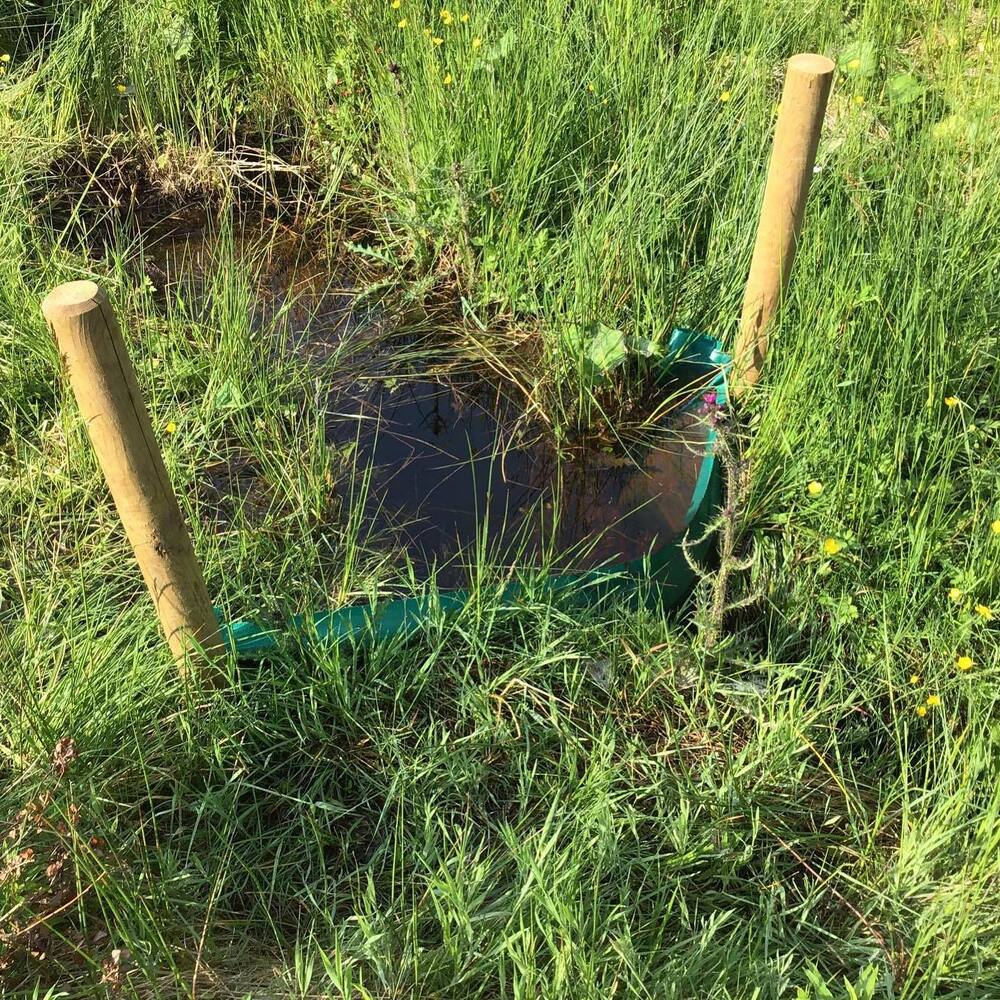You adore vibrant blooms and lush greenery, but have you worried about water seeping into where it doesn't belong? Here, you'll find practical ways to safeguard your floral sanctuary from unwanted water damage.
Leaky windows, burst pipes, and heavy storms can wreak havoc on your plants and interior. You'll learn how simple preventative measures, like routine inspections and timely repairs, can protect your home from costly water-related troubles.
Burst pipes, mold outbreaks, or flooding can still happen despite your best efforts. If you need professional support in Melbourne, click here for expert water damage restoration and regain peace of mind fast.

Maintain Gutters and Downspouts
Keeping your gutters free of debris is crucial for channeling water away from your home. Clearing leaves and dirt prevents buildup that could otherwise lead to serious moisture damage.
- Clean them regularly: Schedule monthly checks for leaves, branches, and dirt, using a sturdy ladder to avoid clogs that overwhelm the system during heavy rainfall.
- Repair leaks promptly: Patch tiny holes using specialized sealant. Even small drips can allow continuous seepage, which compromises your home's foundation over time.
- Ensure proper downspout placement: Extend downspouts several feet from your exterior walls or use gutter extenders to guide rainwater away safely.
- Install gutter guards: Mesh or screen guards block large debris. This simple investment significantly reduces how often you must scoop out stubborn clogs.
- Watch for sagging sections: Secure loose gutters with hanger brackets, ensuring they stay properly angled and draining efficiently without pooling in low spots.
Persistent gutter maintenance keeps water from sneaking into undersides of roofs or seeping into foundations. Paying attention up top goes a long way in safeguarding interior spaces.
Check Plumbing Fixtures Regularly
Proactive inspections of toilets, sinks, and tubs help prevent leaks from spiraling into destructive water damage. These routine checks aren't time-consuming yet can make a monumental difference long-term.
- Observe toilet bases: Any small puddles suggest worn seals that risk hidden water damage beneath flooring, so immediate repairs can stop extensive rot.
- Listen for drips: Faucets with ongoing leaks not only waste water but also raise humidity levels, encouraging mold growth behind walls or under cabinets.
- Examine tub caulking: Tattered caulk at the edges of bathtubs allows moisture to infiltrate, potentially harming wood structures and causing peeling paint in nearby areas.
- Check pipes under sinks: Small cracks or loose fittings beneath kitchen and bathroom sinks can produce gradual drips. Early discovery here saves you from bigger surprises.
- Utilize industry resources: Learn more on key fixtures and how they can trigger sudden leaks.
Even minor drops can add up if overlooked. Stopping them early ensures your fixtures remain in peak condition, saving you repair costs and future headaches.
Protect Basement and Crawl Spaces
Lower levels often fall victim to seepage and flooding, especially during heavy storms. A little precaution minimizes the chance of mold, structural issues, and expensive repairs down below.
- Seal foundation cracks: Apply waterproof sealant to small fractures in basement walls or floors, keeping excessive moisture from creeping in and pooling.
- Use dehumidifiers: Excess humidity encourages condensation and mold growth. Dehumidifiers manage moisture levels, reducing the risk of hidden mildew blooms.
- Elevate storage: Keep boxes or valuables on shelves or pallets. If water intrudes unexpectedly, your belongings aren't automatically ruined on contact.
- Insulate pipes: Pipe insulation wards off condensation that happens when cold pipes meet warm basement air, thereby preventing steady drips and rust.
- Monitor for odors: A musty smell hints at mold or ongoing dampness. Investigating early helps locate hidden leaks in remote corners.

Making these spaces more resistant to water intrusion offers tremendous peace of mind. Practical measures now help you sidestep destructive surprises and preserve your home's structure.
Inspect Roof and Attic Areas
Moisture creeping in from above often goes unnoticed until it soaks insulation and wood. Conducting regular roof checks and attic visits wards off hidden leaks and gradual decay.
Check for damaged shingles
Broken, curling, or missing shingles invite water underneath your roof's outer layer. Replacing them quickly ensures your attic remains protected from incessant drips and moisture buildup.
Look at flashing around vents
Metal strips around chimneys, vents, and skylights can corrode or loosen. Keeping them tight and secure is vital for preventing water seepage through roof openings.
Search for dark spots
Discoloration or damp rings on attic beams often signals slow leaks. Never ignore suspicious markings; they typically point to cracked surfaces above or faulty ventilation.
Assess insulation quality
Waterlogged insulation loses its effectiveness, leading to higher energy bills and persistent dampness. Confirm dryness by touching or checking for musty smells in these concealed sections.
Stay vigilant about ice dams
When snow melts and refreezes along eaves, it traps water behind ridges of ice, pushing it beneath shingles. Proper insulation and ventilation reduce the risk considerably.
Install Leak Detection Sensors
Advanced technology can immediately alert you to unusual spikes in water flow or dampness in key areas. Adding devices is a game-changer for proactive water damage prevention.
Position sensors strategically
Locate them near appliances like dishwashers or washing machines, as well as under sinks and adjacent to water heaters, where leaks typically emerge undetected.
Opt for Wi-Fi connectivity
Many smart sensors will send instant alerts to your phone when they detect unusual moisture levels. Early warning helps handle minor leaks before they escalate.
Consider automatic shutoff
Some systems close the main water valve if mass water flow or a pipe burst is flagged. This measure prevents extensive flooding while you're away.
Integrate with existing devices
Leak sensors can often sync with smart home hubs, pairing well with security systems or thermostats for a comprehensive approach to household protection.
Review available resources
You might also benefit from this helpful overview about preventing extensive water intrusion with timely detection and consistent maintenance routines.

Regularly Test Sump Pump
Basement pumps deliver critical relief when water starts accumulating near your foundation. Verifying operational readiness now means fewer sleepless nights during torrential downpours or sudden thaws.
Locate the sump basin
A pump usually sits in a pit. Identifying its exact spot makes routine access easier, so monthly checks can become second nature in wet seasons.
Pour in water to trigger activation
Simulate heavy rainfall by adding water into the sump pit. Confirm the float switch rises and engages the pump, discharging water away from your home.
Check the discharge line
Ensure tubing directs water well away from the foundation. Any kinks or obstructions can quickly result in backups or less efficient pumping power.
Listen for odd noises
A healthy unit sounds smooth, without rattling or squealing. Unusual clamor might hint at worn bearings or debris inside the impeller that needs cleaning.
Keep a backup plan
Battery-powered systems activate if a storm knocks out electricity. Having this extra layer of protection spares you from potential flooding when the power fails.
Create Seasonal Prevention Checklist
Timing each task for the appropriate season ensures every area of your property gets attention. A structured list helps maintain your home's defenses year-round.

Spring checks
As weather warms, melting snow can reveal new cracks or leaks. Take advantage of pleasant weeks to repair, repaint, and reseal problem spots thoroughly.
Summer tasks
Drier conditions are ideal for roof inspections and exterior painting. Address issues like loose flashing or peeling trim to prevent heavier damage when storms return.
Fall preparations
Clear leaves from gutters and downspouts before cold weather sets in, ensuring proper drainage. Replace old window seals to curb any winter moisture seepage or drafts.
Winter vigilance
Pay close attention to insulation around pipes to ward off freezing. Keep an eye out for ice dams forming near roof edges after each snowfall.
Annual reboot
A yearly overview confirms that smaller tasks you tackled seasonally fit together. This repeated maintenance cycle means you're rarely caught off-guard by hidden trouble.
Monitor Home Water Pressure
Consistent water pressure can be convenient, but excessive force strains pipes and fixtures, eventually leading to sudden leaks in hidden spots or noticeable bursts.
- Check the regulator: A faulty regulator can push pressure above recommended guidelines, so adjust or replace it promptly to keep pipes safe.
- Add a pressure gauge: Screwing a gauge to an outdoor faucet shows real-time readings. Any spike above 80 psi should prompt immediate investigation.
- Look at expansion tanks: Water heaters can boost pressure levels. If you have a tank, ensure it's sized correctly to manage thermal expansion effectively.
- Watch for pipe noise: Hammering sounds or vibrating pipes can indicate that water is rushing too hard, testing your system's connections to the brink.
- Contact professionals: An experienced plumber can accurately diagnose persistent pressure issues and recommend specialized solutions to avert disasters.
Striking that balance between reliable flow and reasonable force protects infrastructure. By regularly verifying levels, you greatly lower risks of a catastrophic pipe failure.
Shield Your Vibrant Blooms
Now that you've armed yourself with practical techniques, you're ready to keep your floral sanctuary intact. If unexpected flooding occurs, consult the experts at Flood Cleanup Services for swift, reliable support, ensuring peace of mind and lasting floral beauty.





